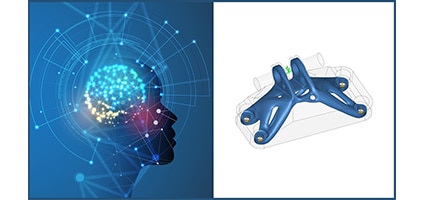The Digital Thread is a concept in manufacturing and product development that refers to the digital representation of a product and its associated data throughout its entire lifecycle, from design and engineering to production and service. It enables seamless communication and information exchange between different stages of the product development and manufacturing process.
The Digital Thread concept aims to connect all stages of the product lifecycle, from initial design and prototyping to manufacturing, quality assurance, and ongoing maintenance and service. This involves capturing and sharing data at each stage of the process, and creating a unified, digital representation of the product and its data that can be accessed and analyzed by all stakeholders.
The goal of implementing a Digital Thread strategy is to enable faster, more efficient, and more agile product development and manufacturing, by ensuring that all stakeholders have access to the correct data at all times. By connecting the entire product development and manufacturing process, the Digital Thread can help companies reduce errors, improve collaboration, and optimize their production processes.
A Digital Thread strategy is enabled by a range of technologies, including CAD (Computer-Aided Design), PLM (Product Lifecycle Management), and IoT (Internet of Things) sensors and devices. These technologies enable the capture, analysis, and sharing of data throughout the product development and manufacturing process, creating a digital thread that connects all stages of the process.
What is the risk of not adopting a Digital Thread strategy?
Developing a Digital Thread strategy applies for every manufacturing company. How detailed you get with this strategy will depend on your individual needs and implementing a strategy in baby steps is normally recommended. Not adopting a Digital Thread leads to inefficiencies and errors that can impact the quality of products, increase costs, and reduce competitiveness. And it will most likely reduce efficiency and speed to market. Any company that doesn’t prioritize connected data on a basic level has more problems then they realize.
- Inefficient Communication: Without a Digital Thread, communication between different stages of the product lifecycle can be slow and error-prone. This can lead to delays, misunderstandings, and quality issues.
- Lack of Transparency: Difficulty tracking the status of a product throughout its lifecycle. This can lead to a lack of transparency and visibility, which can make it difficult to identify bottlenecks and errors as well as how to fix them.
- Data Silos: Product data can be siloed in different systems and departments, which can make it difficult to share information, have access to the correct information and data and hinders collaboration.
- Increased Risk of Errors: Errors can easily occur when transferring data between different systems or departments. This can lead to quality issues and increased costs.
- Inability to Adapt and be Nimble: Without a Digital Thread, it can be difficult to adapt to changes in customer needs, market trends, or regulatory requirements. This can make it challenging to stay competitive and respond quickly to changing conditions.
As a leader in PLM implementation, 3 HTi has we have been improving our clients processes and efficiencies for over 20 years. We have been successful and proficient in helping develop and execute their Digital Thread strategies with a measurable ROI. If you are interested in learning more about adopting a Digital Thread initiative, feel free to contact us at (866) 624-3484 or info@3hti.com.
We sincerely hope you find this information helpful and interesting.

